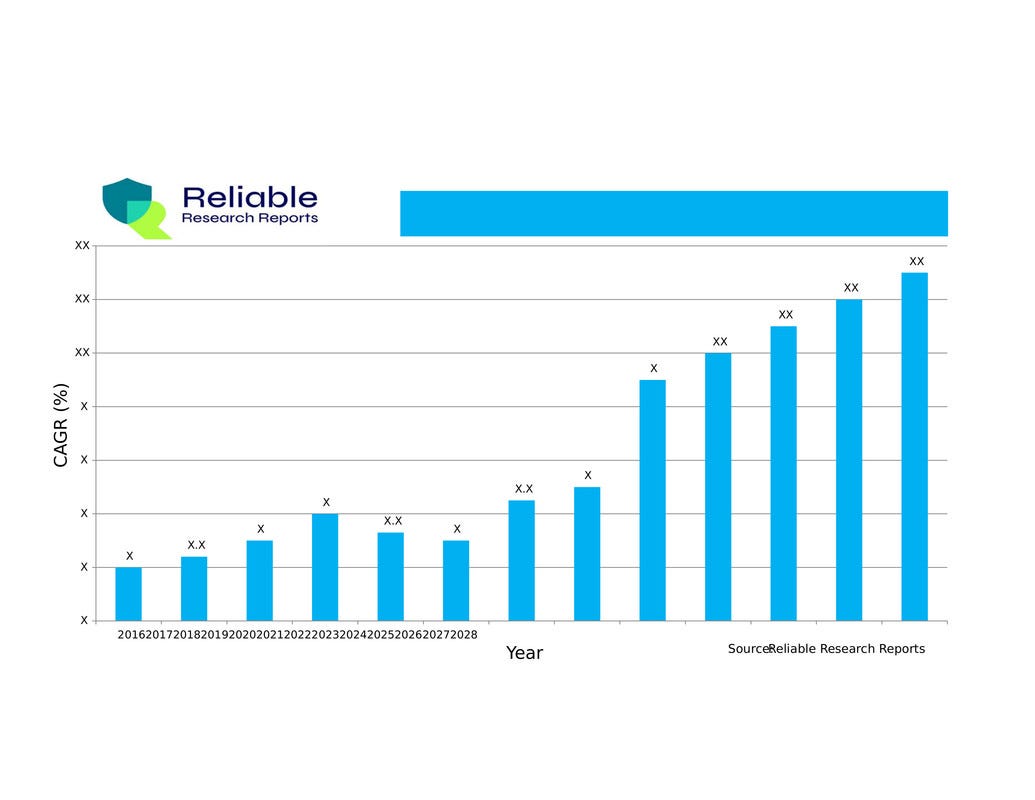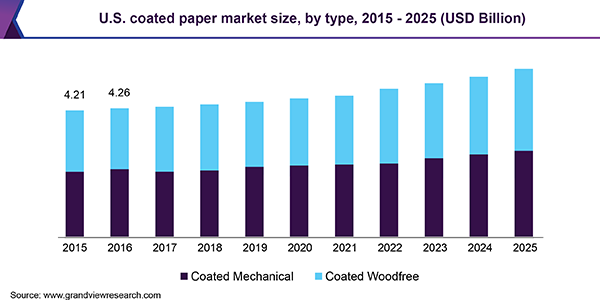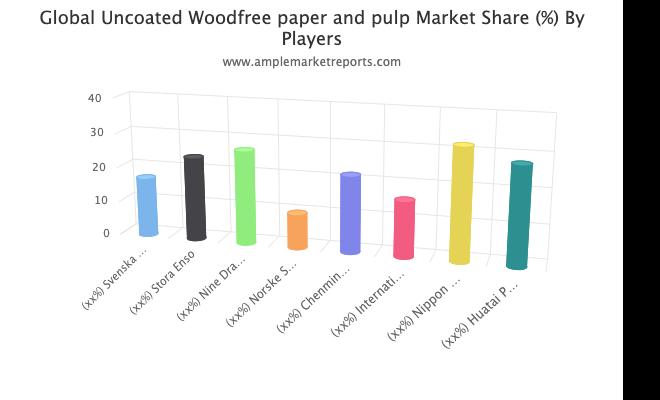Dlaczego globalny popyt na papier bezdrzewny jest wysoki?
Globalny popyt na papier bezdrzewny: Kompleksowy przegląd
Zrozumienie globalnego popytu na papier bezdrzewny
Papier bezdrzewny to rodzaj papieru, który jest produkowany przy użyciu chemicznej masy celulozowej, eliminując w ten sposób ligninę, która nadaje papierowi właściwości bezdrzewne. W wyniku tego procesu uzyskuje się papier o lepszym kontraście, dzięki czemu nadaje się on do druku archiwalnego. Papier bezdrzewny cieszy się dużym popytem na całym świecie ze względu na różne zalety i zastosowania w różnych branżach.
Co to jest papier bezdrzewny i dlaczego jest tak poszukiwany na całym świecie?
Papier bezdrzewny, jak sama nazwa wskazuje, to papier niezawierający składników drzewnych. Jest on wytwarzany z chemicznej masy celulozowej pochodzącej z twardego lub miękkiego drewna. Proces ten polega na usunięciu ligniny, naturalnie występującej w drewnie substancji, która nadaje mu kolor i sztywność. W rezultacie papier jest bielszy, jaśniejszy i trwalszy niż zwykły papier.
Papier bezdrzewny jest poszukiwany na całym świecie z kilku powodów. Po pierwsze, jego najwyższa jakość i estetyka sprawiają, że jest on popularnym wyborem w przypadku wysokiej klasy katalogów, czasopism i innych materiałów drukowanych. Jasny i wyraźny wygląd papieru bezdrzewnego papier zwiększa efekt wizualny drukowanych treści, czyniąc je bardziej angażującymi dla czytelników.
Po drugie, rośnie zapotrzebowanie na ekologiczne rozwiązania w zakresie druku. Papier bezdrzewny jest uważany za bardziej zrównoważony w porównaniu z papierami zawierającymi włókna drzewne. Jest on często wytwarzany z włókien pochodzących z recyklingu lub z lasów zarządzanych w sposób zrównoważony. To sprawia, że jest to atrakcyjna opcja dla świadomych ekologicznie firm i konsumentów, którzy szukają produkty papierowe o obniżonej emisji dwutlenku węgla ślad.
Wreszcie, postęp w technologii druku zwiększył zapotrzebowanie na papier bezdrzewny. Nowoczesne techniki druku wymagają papieru o określonych właściwościach, aby osiągnąć optymalne rezultaty. Papier bezdrzewny zapewnia doskonałą drukowność, umożliwiając uzyskanie żywych kolorów, ostrych obrazów i wyraźnego tekstu. To sprawia, że jest to preferowany wybór do różnych zastosowań drukarskich, w tym reklamy, opakowań i komunikacji korporacyjnej.
Czynniki napędzające globalny popyt na papier bezdrzewny
Na globalny popyt na papier bezdrzewny wpływa kilka kluczowych czynników. Po pierwsze, rosnąca świadomość i przyjęcie zrównoważonych praktyk w różnych branżach przyczyniły się do wzrostu popytu na ekologiczne produkty papierowe. Przedsiębiorstwa, rządy i konsumenci coraz częściej stawiają na przyjazne dla środowiska alternatywy, a papier bezdrzewny spełnia wszystkie wymagania w zakresie zrównoważonego rozwoju.
Co więcej, rozwój mediów cyfrowych i platform internetowych doprowadził do spadku popularności tradycyjnych mediów drukowanych. Jednak nadal istnieje znaczne zapotrzebowanie na materiały drukowane, szczególnie w niektórych branżach. Papier bezdrzewny jest nadal poszukiwany do produkcji wysokiej jakości katalogów, broszur, korespondencji bezpośredniej i innych materiałów marketingowych offline. Ponadto przemysł opakowaniowy wymaga zrównoważonego i atrakcyjnego wizualnie papieru do pakowania produktów, co zwiększa popyt na papier bezdrzewny.
Co więcej, wzrost gospodarczy i rozwój rynków wschodzących napędzają popyt na papier bezdrzewny. W miarę jak kraje przechodzą industrializację i urbanizację, wzrasta zapotrzebowanie na materiały drukowane do różnych celów, takich jak edukacja, reklama i komunikacja korporacyjna. Stwarza to znaczące możliwości dla papieru bezdrzewnego producenci papieru aby zaspokoić rosnący popyt.
Prognoza wielkości rynku i możliwości wzrostu
Przewiduje się, że globalny rynek papieru bezdrzewnego osiągnie wartość $2 018,0 mln USD do 2032 r., przy złożonej rocznej stopie wzrostu (CAGR) wynoszącej 2,4% od 2022 r.. Wzrost ten jest napędzany przez takie czynniki, jak rozwijające się sektory przemysłowe, rosnące zapotrzebowanie konsumentów na zrównoważone produkty oraz postęp technologiczny w procesie produkcji papieru.
Oczekuje się, że Ameryka Północna zdominuje rynek papieru bezdrzewnego, z przewidywanym udziałem w rynku na poziomie 17% w 2022 roku. Uznani producenci w regionie, tacy jak Avery Dennison Corporation, zainwestowali w badania i rozwój, aby poprawić jakość i zrównoważony rozwój swoich produktów papierowych.
Europa jest również znaczącym rynkiem papieru bezdrzewnego, z oczekiwanym udziałem w rynku na poziomie 19% w 2022 roku. Silny nacisk regionu na ochronę środowiska i zrównoważony rozwój napędza popyt na ekologiczne produkty papiernicze, w tym papier bezdrzewny.
Dodatkowo, start-upy i innowacyjne firmy wchodzą na rynek papieru bezdrzewnego, koncentrując się na zrównoważonych rozwiązaniach opakowaniowych. Wraz z rosnącym popytem na ekologiczne materiały opakowaniowe, nowi gracze zwiększają wartość rynku i tworzą możliwości rozwoju.
Podsumowując, papier bezdrzewny cieszy się dużym popytem na całym świecie ze względu na jego najwyższą jakość, właściwości przyjazne dla środowiska i przydatność do różnych zastosowań drukarskich. Czynniki napędzające globalny popyt na papier bezdrzewny obejmują rosnący nacisk na zrównoważony rozwój, zapotrzebowanie na wysokiej jakości materiały drukowane oraz wzrost gospodarczy rynków wschodzących. Wraz z przewidywanym wzrostem wielkości rynku i rosnącym popytem na zrównoważone produkty papierowe, przemysł papieru bezdrzewnego stwarza znaczne możliwości rozwoju dla producentów i firm działających w tym sektorze.
Źródła:
Analiza regionalna i dynamika rynku
Analiza regionalna i dynamika rynku odgrywają kluczową rolę w zrozumieniu globalnego popytu na papier bezdrzewny. W tej sekcji zbadamy dominujące regiony na rynku papieru bezdrzewnego, dynamikę rynku wpływającą na globalny popyt oraz wyzwania stojące przed branżą papieru bezdrzewnego.
Kluczowe regiony dla popytu na papier bezdrzewny
Popyt na papier bezdrzewny nie jest równomiernie rozłożony na całym świecie. Niektóre regiony stały się dominującymi graczami na rynku papieru bezdrzewnego. Przyjrzyjmy się bliżej tym regionom:
- Ameryka Północna: Oczekuje się, że Ameryka Północna zdominuje rynek papieru bezdrzewnego, posiadając szacowany udział w rynku na poziomie 17% w 2022 roku. W regionie tym odnotowano znaczące inwestycje w badania i rozwój przez uznanych producentów, takich jak Avery Dennison Corporation.
- Europa: Europa jest kolejnym kluczowym regionem w branży woodfree rynek papieruPrzewiduje się, że w 2022 r. udział w rynku wyniesie 19%. Rynek europejski jest napędzany przez takie czynniki, jak rosnąca świadomość na temat zrównoważonych opcji papieru i przyjaznych dla środowiska rozwiązań w zakresie drukowania.
Dynamika rynku wpływająca na globalny popyt
Na globalny popyt na papier bezdrzewny wpływają różne czynniki rynkowe. Zrozumienie tej dynamiki jest niezbędne dla interesariuszy w branży. Przyjrzyjmy się niektórym z kluczowych czynników:
- Troska o środowisko: Rynek papieru bezdrzewnego stoi w obliczu rosnącej presji na przyjęcie zrównoważonych praktyk. W rezultacie rośnie zapotrzebowanie na papier nadający się do recyklingu i przyjazne dla środowiska rozwiązania w zakresie druku. Ta zmiana w kierunku zrównoważonego rozwoju wynika z potrzeby zmniejszenia wpływu przemysłu papierniczego na środowisko.
- Media cyfrowe: Rozwój mediów cyfrowych doprowadził do spadku popytu na tradycyjne materiały drukowane. Wraz z przejściem reklamodawców na platformy cyfrowe, zmniejszyło się zapotrzebowanie na papier bezdrzewny do celów reklamowych. Zmiana ta stanowiła wyzwanie dla branży papieru bezdrzewnego.
- Koszty produkcji: Koszty produkcji papieru bezdrzewnego są generalnie wyższe w porównaniu z innymi rodzajami papieru. Czynnik ten może wpływać na dostępność i koszt papieru bezdrzewnego, czyniąc go mniej konkurencyjnym w niektórych segmentach rynku, gdzie koszt jest istotnym czynnikiem.
- Konkurencja ze strony materiałów alternatywnych: Papier bezdrzewny konkuruje z materiałami takimi jak tworzywa sztuczne i metale, które oferują unikalne właściwości i korzyści. Wraz z postępem technologicznym te alternatywne materiały stały się realną alternatywą dla papieru bezdrzewnego w niektórych zastosowaniach.
Wyzwania stojące przed przemysłem papieru bezdrzewnego
Podczas gdy branża papieru bezdrzewnego odnotowała wzrost i popyt, stoi ona również przed kilkoma wyzwaniami. Niektóre z kluczowych wyzwań obejmują:
- Zmiany regulacyjne: Zmiany regulacyjne związane z praktykami leśnymi i przepisami środowiskowymi mogą mieć wpływ na dostępność i koszt papieru bezdrzewnego. Zmiany te mogą wymagać od branży przyjęcia nowych praktyk i technologii w celu zapewnienia zgodności z przepisami.
- Przejście na platformy cyfrowe: Pojawienie się platform cyfrowych znacząco wpłynęło na popyt na tradycyjne materiały drukowane, w tym papier bezdrzewny. Reklamodawcy i wydawcy coraz częściej przechodzą na platformy cyfrowe, zmniejszając popyt na papier bezdrzewny w tych sektorach.
- Spowolnienie gospodarcze: Spowolnienie gospodarcze może mieć znaczący wpływ na budżety reklamowe, co z kolei może wpłynąć na popyt na papier bezdrzewny. W okresie spowolnienia gospodarczego firmy często ograniczają wydatki na reklamę, co prowadzi do spadku popytu na materiały reklamowe, takie jak papier bezdrzewny.
- Postęp technologiczny: Postęp technologiczny umożliwił produkcję wysokiej jakości papieru z materiałów alternatywnych. Konkurencja ze strony innowacyjnych materiałów stanowi wyzwanie dla branży papieru bezdrzewnego, ponieważ musi ona stale ewoluować i dostosowywać się, aby pozostać konkurencyjną.
Podsumowując, analiza regionalna i dynamika rynku znacząco wpływają na globalny popyt na papier bezdrzewny. Regiony takie jak Ameryka Północna i Europa dominują na rynku, napędzane takimi czynnikami jak zrównoważone praktyki i troska o środowisko. Jednak branża stoi również w obliczu wyzwań, takich jak konkurencja ze strony alternatywnych materiałów i przejście na platformy cyfrowe. Rozumiejąc tę dynamikę i wyzwania, interesariusze w branży papieru bezdrzewnego mogą dostosować swoje strategie i wykorzystać możliwości rozwoju.
Zrównoważone praktyki i przyszłe trendy
Papier bezdrzewny, znany również jako papier niepowlekanyjest rodzajem papieru, który jest wytwarzany bez użycia mechanicznej masy celulozowej, która zawiera ligninę. Ułatwia to jego recykling i przyczynia się do jego zrównoważonego charakteru. W związku z rosnącą troską o środowisko na całym świecie, rośnie popyt na zrównoważone produkty papiernicze, w tym papier bezdrzewny.
Inicjatywy na rzecz zrównoważonych opakowań z papieru bezdrzewnego
W ostatnich latach nastąpił znaczący nacisk na bardziej zrównoważone opcje pakowania, a papier bezdrzewny odgrywa kluczową rolę w tym ruchu. Wiele firm i organizacji wdraża inicjatywy promujące stosowanie zrównoważonych opakowań z papieru bezdrzewnego.
Jednym z godnych uwagi przykładów jest inicjatywa Pack4Good, która została uruchomiona przez Ben & Jerry's, znaną markę lodów. W ramach tej inicjatywy firma Ben & Jerry's zobowiązała się do stosowania zrównoważonych, bezdrzewnych opakowań papierowych do pojemników na lody. Dokonując tej zmiany, firma chciała zmniejszyć swój wpływ na środowisko i promować bardziej zrównoważone podejście do opakowań.
Tego rodzaju inicjatywy nie tylko przynoszą korzyści środowisku, ale także napędzają popyt na papier bezdrzewny. Firmy dostrzegają znaczenie zrównoważonych praktyk i wybierają papier bezdrzewny jako realną opcję dla swoich potrzeb w zakresie opakowań.
Przyszłe trendy wzrostu w branży
Oczekuje się, że branża papieru bezdrzewnego doświadczy znacznego wzrostu w nadchodzących latach. Według badań rynkowych przewiduje się, że globalny rynek papieru bezdrzewnego osiągnie $2 018,0 mln USD do 2032 r., przy złożonej rocznej stopie wzrostu (CAGR) wynoszącej 2,4% od 2022 r.
Jednym z kluczowych czynników napędzających ten wzrost jest rosnący popyt na biały papier bezdrzewny. Biały papier bezdrzewny jest bardzo poszukiwany ze względu na przyjazne dla środowiska rozwiązania drukarskie i jego zastosowanie w wysokiej klasy katalogach i czasopismach. W miarę jak firmy i konsumenci stają się coraz bardziej świadomi ekologicznie, popyt na zrównoważone produkty papierowe, takie jak biały papier bezdrzewny, stale rośnie.
Ponadto na rynku pojawiają się start-upy, które koncentrują się na zrównoważonych, bezdrzewnych rozwiązaniach w zakresie opakowań papierowych. Start-upy te wnoszą wartość dodaną do branży, wprowadzając innowacyjne i przyjazne dla środowiska opcje pakowania. Oczekuje się, że trend ten będzie dalej napędzał wzrost rynku papieru bezdrzewnego w przyszłości.
Wpływ troski o środowisko na trendy rynkowe
Kwestie środowiskowe mają znaczący wpływ na wpływ na trendy rynkowe w branży papieru bezdrzewnego. Jak wspomniano wcześniej, rośnie popyt na zrównoważone opakowania, w tym na zrównoważony papier bezdrzewny.
Istnieją jednak również czynniki ograniczające, które mogą mieć wpływ na rynek. Jednym z tych czynników jest przejście na zrównoważone opcje papieru ze względu na rosnące obawy o środowisko. Konsumenci stają się coraz bardziej świadomi wpływu swoich wyborów na środowisko, co doprowadziło do spadku popytu na tradycyjny druk.
Dodatkowo, koszty produkcji papieru bezdrzewnego są generalnie wyższe w porównaniu do innych rodzajów papieru. Może to być czynnik ograniczający dla niektórych firm, zwłaszcza w branżach wrażliwych na koszty.
Co więcej, branża papieru bezdrzewnego stoi w obliczu konkurencji ze strony alternatywnych materiałów, takich jak tworzywa sztuczne i metale. Aby pozostać konkurencyjnym, przemysł papieru bezdrzewnego musi stale wprowadzać innowacje i znajdować sposoby na wyróżnienie się poprzez promowanie wyjątkowych zalet papieru bezdrzewnego.
Pomimo tych wyzwań oczekuje się, że branża papieru bezdrzewnego będzie nadal rosła ze względu na rosnące zapotrzebowanie na zrównoważone rozwiązania papiernicze i przyjęcie praktyk przyjaznych dla środowiska.
Podsumowując, globalny popyt na papier bezdrzewny wynika z rosnącego zapotrzebowania na zrównoważone opakowania. Przyczyniają się do tego inicjatywy promujące zrównoważone opakowania z papieru bezdrzewnego, przyszłe możliwości rozwoju w branży oraz wpływ troski o środowisko. W miarę jak świat staje się coraz bardziej świadomy ekologicznie, oczekuje się dalszego wzrostu popytu na papier bezdrzewny, co stwarza ekscytujące możliwości dla branży.
Stoły
Tabela 1: Kraje będące największymi producentami papieru bezdrzewnego
| Ranga | Kraj | Produkcja (w tysiącach ton metrycznych) |
|---|---|---|
| 1 | Chiny | 9,500 |
| 2 | Stany Zjednoczone | 5,500 |
| 3 | Japonia | 3,300 |
| 4 | Niemcy | 2,800 |
| 5 | Korea Południowa | 2,500 |
Tabela 2: Udział w rynku kluczowych graczy w branży papieru bezdrzewnego
| Ranga | Firma | Udział w rynku |
|---|---|---|
| 1 | International Paper | 20% |
| 2 | Stora Enso | 15% |
| 3 | Nippon Paper Group | 12% |
| 4 | UPM-Kymmene Corporation | 10% |
| 5 | Sappi Limited | 8% |
Tabela 3: Zużycie papieru bezdrzewnego w podziale na branże
| Przemysł | Zużycie (w milionach ton metrycznych) |
|---|---|
| Drukowanie i publikowanie | 3.5 |
| Opakowanie | 2.2 |
| Artykuły biurowe i papiernicze | 1.8 |
| Reklama i promocje | 1.3 |
Najczęściej zadawane pytania dotyczące globalnego popytu na papier bezdrzewny
Co to jest papier bezdrzewny i dlaczego jest tak poszukiwany na całym świecie?
Aby zrozumieć, dlaczego papier bezdrzewny jest poszukiwany na całym świecie, ważne jest, aby zrozumieć, że papier bezdrzewny jest wolny od składników drzewnych, co uzyskuje się poprzez zastosowanie chemicznej masy celulozowej w celu usunięcia ligniny. Proces ten pozwala uzyskać jaśniejszy i trwalszy papier, idealny do wysokiej jakości zastosowań, takich jak katalogi i czasopisma.
Jakie czynniki napędzają globalny popyt na papier bezdrzewny?
Globalny popyt na papier bezdrzewny jest napędzany przez rosnący nacisk na zrównoważony rozwój, ciągłe zapotrzebowanie na wysokiej jakości materiały drukowane oraz wzrost gospodarczy na rynkach wschodzących.
Jak wygląda prognoza wielkości rynku papieru bezdrzewnego i jakie są przewidywane możliwości wzrostu?
Przewiduje się, że rynek papieru bezdrzewnego osiągnie wartość $2 018,0 mln USD do 2032 r., przy złożonej rocznej stopie wzrostu (CAGR) wynoszącej 2,4% od 2022 r., napędzanej przez rozwijające się sektory przemysłowe, rosnące zapotrzebowanie konsumentów na zrównoważone produkty i postęp technologiczny w procesie produkcji papieru.
Jakie są kluczowe regiony dla popytu na papier bezdrzewny i jaka dynamika rynku wpływa na globalny popyt?
Ameryka Północna i Europa są kluczowymi regionami pod względem popytu na papier bezdrzewny, na który wpływają takie czynniki jak zrównoważone praktyki i obawy o środowisko. Dynamika rynku, taka jak troska o środowisko, media cyfrowe, koszty produkcji i konkurencja ze strony alternatywnych materiałów, znacząco wpływa na globalny popyt na papier bezdrzewny.
Jakie wyzwania stoją przed branżą papieru bezdrzewnego w obliczu rosnącego popytu?
Zmiany regulacyjne, transformacja
Podsumowując, Globalny popyt na papier bezdrzewny bada, dlaczego papier bezdrzewny jest poszukiwany na całym świecie. Zrozumienie czynników napędzających ten popyt i prognoz rynkowych ujawnia możliwości wzrostu. Analiza dominujących regionów, dynamiki rynku i wyzwań branżowych zapewnia wgląd. Kluczowymi kwestiami są wysiłki na rzecz zrównoważonego rozwoju, przyszłe trendy wzrostu i wpływ na środowisko. Ponieważ popyt na papier bezdrzewny stale rośnie, przyjęcie zrównoważonych praktyk i wyprzedzanie trendów rynkowych ma kluczowe znaczenie dla sukcesu branży.





